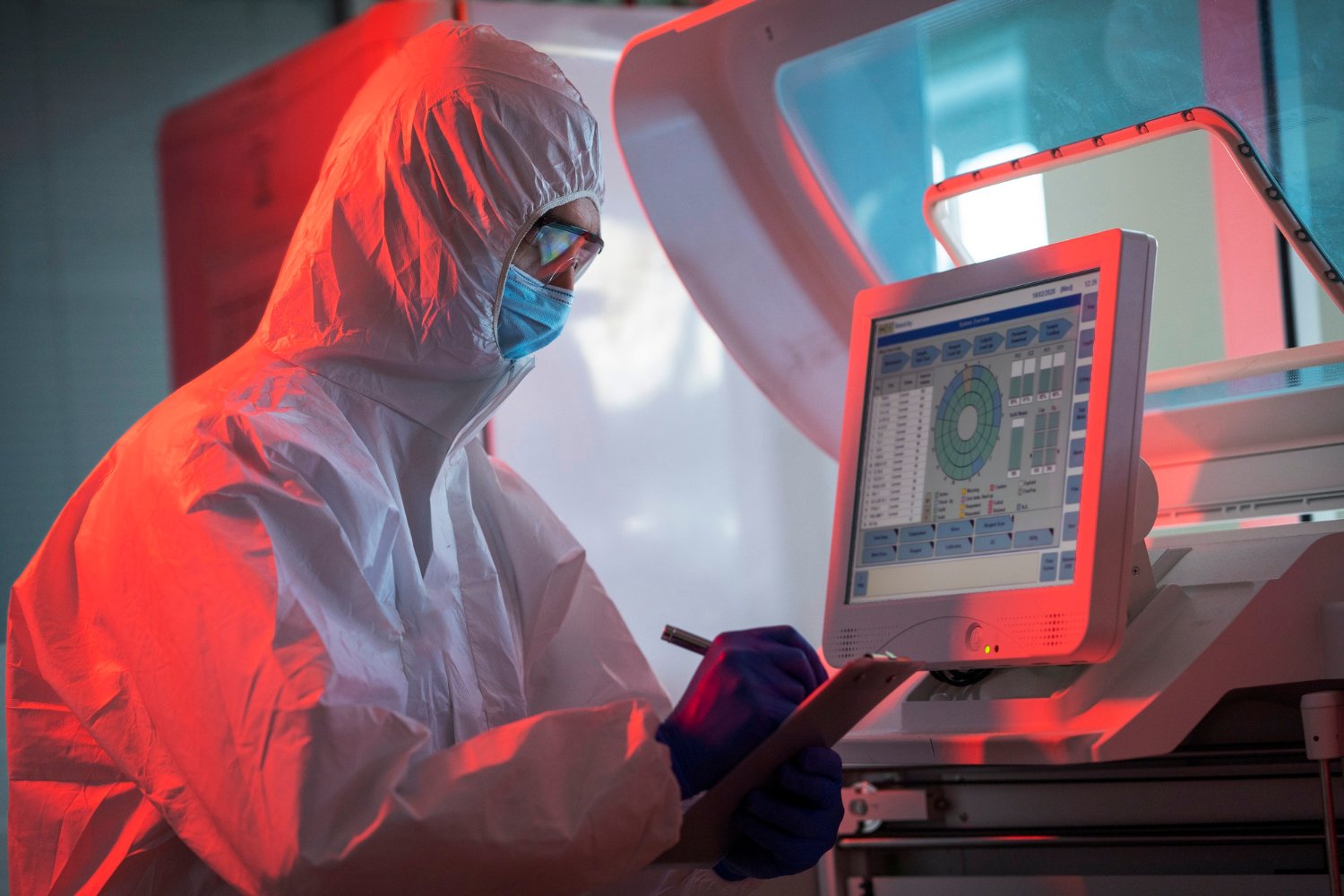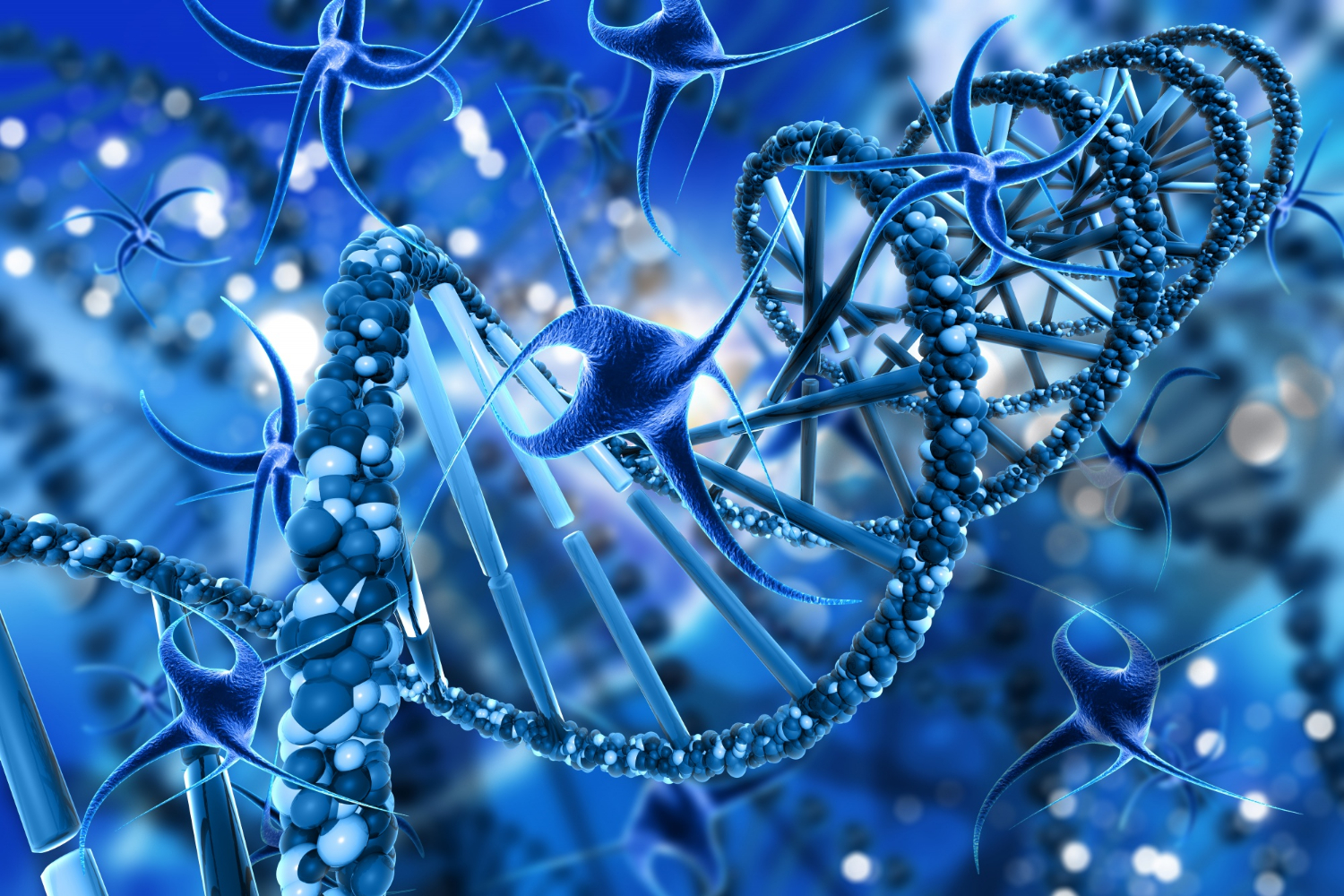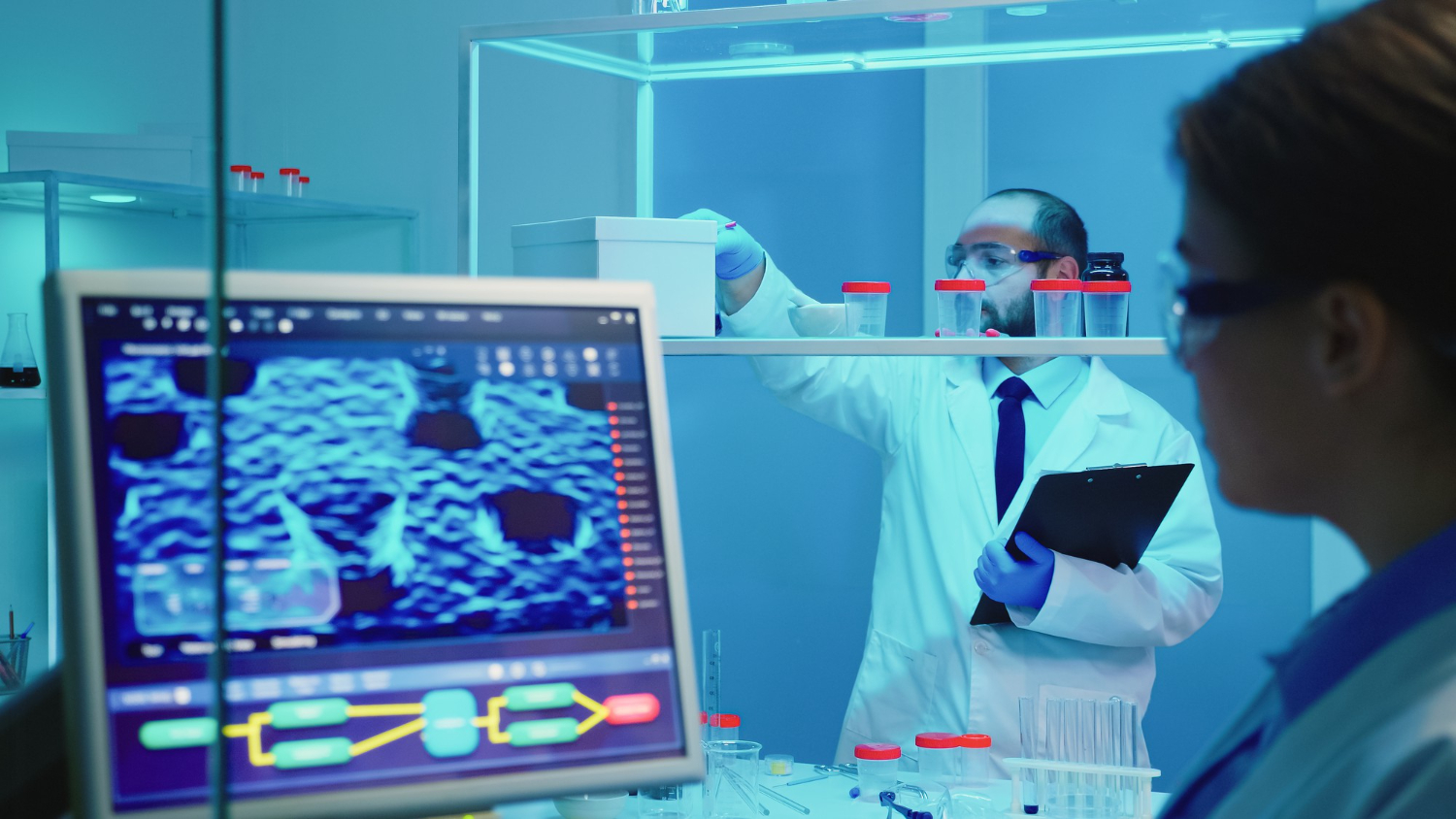Introduction: A New Era for Drug Development
Drug development has always been slow and expensive. Identifying potential drug candidates, testing them, and moving through clinical trials can take years. Costs run into billions. The pharmaceutical industry now faces growing pressure to deliver faster and more efficiently. AI-driven drug discovery offers a practical solution.
Artificial intelligence (AI) and machine learning models are changing how pharmaceutical companies design and validate drugs. Generative AI and large language models add new capabilities, from predicting molecular structures to analysing natural language research papers. These tools reduce time, cut costs, and improve accuracy.
The Role of AI in Drug Discovery
AI in drug discovery is not a single tool. It is a set of methods that work across the entire drug development pipeline. AI models analyse large datasets of chemical structures, biological pathways, and clinical outcomes. They identify patterns that humans might miss.
Machine learning models predict how molecules interact with targets. Generative AI designs new compounds with desired properties. Large language models read scientific literature and extract insights in natural language. Together, these AI tools accelerate research and improve decision-making.
Why AI-Driven Drug Discovery Matters
Traditional drug design relies on trial and error. Researchers test thousands of compounds to find one potential drug candidate. This process wastes time and resources. AI-driven drug discovery changes the game.
AI models simulate interactions before any lab work begins. They rank drug candidates by predicted success. They flag risks early. This means fewer failed experiments and faster progress to clinical trials.
Pharmaceutical companies gain a competitive edge. They deliver high-quality drugs sooner and respond to urgent health needs without compromising safety.
Read more: AI Vision for Smarter Pharma Manufacturing
Generative AI and Drug Design
Generative AI creates new molecular structures based on defined goals. It learns from existing compounds and predicts what will work. This approach expands the chemical space beyond what humans can imagine.
Drug design becomes more targeted. AI tools propose molecules with optimal binding, stability, and safety profiles. Researchers validate these suggestions in silico before moving to wet labs. This reduces cost and speeds up drug development.
Large Language Models in Research
Large language models process natural language at scale. They read millions of research papers, patents, and clinical trial reports. They summarise findings and highlight connections between studies.
This capability saves time for scientists. Instead of manual searches, they receive curated insights. AI-driven drug discovery benefits from this knowledge base, guiding decisions on targets, pathways, and trial designs.
From Data to Decisions: How AI Works
AI-driven drug discovery depends on data. Large datasets of genomic sequences, protein structures, and chemical libraries feed machine learning models. These models learn patterns and predict outcomes.
Deep learning adds more power. Neural networks process complex relationships between molecules and biological systems. They forecast toxicity, efficacy, and pharmacokinetics. This predictive strength reduces uncertainty in early stages of drug development.
Read more: The Impact of Computer Vision on The Medical Field
Overcoming Barriers to Adoption: Practical Strategies for AI Integration
While the promise of AI-driven drug discovery is clear, many pharmaceutical companies struggle with implementation. Common barriers include high upfront costs, lack of technical expertise, and resistance to change within established workflows. Overcoming these challenges requires a structured approach.
1. Start with Pilot Projects
Rather than attempting a full-scale transformation immediately, companies should begin with targeted pilot projects. These initiatives allow teams to test AI tools on specific tasks—such as molecule screening or literature analysis without disrupting core operations. Successful pilots build confidence and provide measurable ROI, paving the way for broader adoption.
2. Invest in Talent and Training
AI-driven drug discovery demands a blend of domain expertise and technical skills. Pharmaceutical companies must invest in training programs for scientists and data analysts. Upskilling teams ensures they can interpret AI outputs, validate predictions, and integrate insights into decision-making. Partnerships with academic institutions and AI vendors can accelerate this learning curve.
3. Build Collaborative Ecosystems
No single organisation can master every aspect of AI-driven drug discovery alone. Collaboration is key. Pharmaceutical companies should form alliances with technology providers, research institutions, and regulatory bodies. These partnerships enable access to cutting-edge tools, shared datasets, and best practices. Open innovation models foster knowledge exchange and reduce duplication of effort.
4. Prioritise Explainability and Trust
AI models often operate as “black boxes,” making it difficult to understand how predictions are generated. This lack of transparency can hinder regulatory approval and internal acceptance. Companies should adopt explainable AI frameworks that provide clear reasoning behind recommendations. Visual dashboards, confidence scores, and audit trails enhance trust and support compliance.
5. Align AI Initiatives with Business Goals
AI adoption should not be a technology experiment—it must serve strategic objectives. Whether the goal is reducing development timelines, improving success rates, or enabling personalised medicine, every AI project should map to measurable outcomes. Clear KPIs ensure accountability and demonstrate value to stakeholders.
Clinical Trials and AI Integration
AI does not stop at drug design. It supports clinical trials by selecting patient cohorts, predicting responses, and monitoring safety. AI tools analyse trial data in real time, flagging anomalies and optimising protocols.
This integration shortens timelines and improves reliability. Pharmaceutical companies reduce costs while maintaining compliance with regulatory standards.
Read more: High-Throughput Image Analysis in Biotechnology
Benefits for Pharmaceutical Companies
-
Speed: AI-driven drug discovery cuts years from development cycles.
-
Cost Efficiency: Fewer failed experiments mean lower expenses.
-
High Quality: AI models improve accuracy in predicting success.
-
Scalability: AI tools handle large datasets without fatigue.
These benefits make AI-driven drug discovery a strategic priority for the pharmaceutical industry.
Ethics and Regulatory Compliance in AI-Driven Drug Discovery
AI-driven drug discovery introduces new ethical and regulatory challenges. Pharmaceutical companies must ensure transparency in AI models and maintain accountability for decisions. Regulators require clear documentation of how AI tools influence drug design and candidate selection. This includes audit trails for every prediction and validation step.
Bias in data is a major concern. Large datasets often reflect historical imbalances, which can lead to unfair outcomes. Companies must implement strict data governance and bias detection protocols. Ethical frameworks should guide the use of generative AI and large language models, ensuring patient safety and privacy remain central.
Compliance extends to clinical trials. AI tools that optimise trial design or patient selection must meet international standards. Regulators expect evidence that AI-driven processes do not compromise safety or scientific integrity. Pharmaceutical companies should collaborate with regulatory bodies early to align expectations and avoid delays.
Building Robust Data Foundations for AI Models
Data quality determines success in AI-driven drug discovery. Machine learning models and generative AI require high-quality datasets to produce reliable predictions. Poor data leads to flawed drug candidates and wasted resources.
Pharmaceutical companies must invest in data curation. This includes cleaning, normalising, and annotating chemical and biological datasets. Integration of genomic, proteomic, and clinical data creates a richer foundation for AI models. Large language models also need structured corpora of scientific literature to extract meaningful insights.
Data security is critical. Sensitive patient information must be anonymised and stored under strict compliance protocols. Cloud platforms and secure APIs enable collaboration without compromising privacy. Companies that prioritise data integrity build trust and accelerate innovation.

Scaling AI Tools Across Drug Development Pipelines
AI-driven drug discovery starts with early-stage research but extends across the entire pipeline. Generative AI designs molecules. Machine learning models predict toxicity and efficacy. Large language models summarise trial results and regulatory guidelines.
Scaling these tools requires infrastructure. High-performance computing supports deep learning models and large datasets. Cloud-based platforms enable global teams to collaborate in real time. Integration with laboratory information systems ensures smooth workflows.
Automation reduces manual tasks. AI tools can prioritise drug candidates, schedule experiments, and analyse outcomes. This frees scientists to focus on strategy and interpretation. Pharmaceutical companies that scale AI effectively gain speed and consistency across drug development.
Read more: Pattern Recognition and Bioinformatics at Scale
The Impact of Generative AI on Drug Design
Generative AI is reshaping drug design. Traditional methods explore limited chemical spaces. Generative models create novel compounds with tailored properties. They optimise binding affinity, solubility, and stability before synthesis begins.
This approach reduces trial-and-error cycles. AI-driven drug discovery moves from random screening to targeted innovation. Researchers validate AI-generated molecules through simulations and lab tests. Success rates improve, and timelines shrink.
Generative AI also supports repurposing. It identifies structural similarities between existing drugs and new targets. This accelerates development for rare diseases and urgent health crises. Pharmaceutical companies gain flexibility and resilience in competitive markets.
Large Language Models and Knowledge Extraction
Large language models process natural language at scale. They read millions of research papers, patents, and clinical trial reports. They summarise findings, highlight contradictions, and suggest new hypotheses.
This capability transforms literature review. Scientists receive curated insights instead of sifting through endless documents. AI-driven drug discovery benefits from faster knowledge transfer and reduced cognitive load.
Language models also assist in regulatory compliance. They extract key requirements from complex guidelines and present them in clear terms. This reduces errors and speeds approval processes.
AI in Clinical Trials: Smarter Design and Monitoring
Clinical trials consume time and resources. AI tools optimise trial design by predicting patient responses and identifying ideal cohorts. Machine learning models analyse historical data to reduce variability and improve statistical power.
Real-time monitoring enhances safety. AI systems track adverse events and flag anomalies. They adjust protocols dynamically, reducing delays and improving outcomes. Pharmaceutical companies save costs while maintaining rigorous standards.
AI-driven analytics also support adaptive trials. These designs allow modifications based on interim results. This flexibility accelerates progress without compromising validity.
Read more: AI in Pharma R&D: Faster, Smarter Decisions
Challenges and Solutions
AI-driven drug discovery faces hurdles. Data quality is critical. Poor or biased datasets lead to flawed predictions. Integration with existing workflows can be complex. Regulatory compliance adds another layer of difficulty.
Solutions include rigorous data curation, transparent AI models, and strong governance. Pharmaceutical companies must invest in infrastructure and training to realise full benefits.
Future Trends: Personalised Medicine and Predictive Analytics
The future of AI-driven drug discovery lies in personalisation. AI models will design drugs tailored to individual genetic profiles. This reduces side effects and improves efficacy. Predictive analytics will forecast treatment outcomes and guide dosing strategies.
Integration with wearable devices and electronic health records will create continuous feedback loops. AI tools will analyse real-world data to refine therapies post-launch. Pharmaceutical companies will shift from static products to dynamic treatment ecosystems.
Generative AI and large language models will continue to evolve. They will collaborate with robotics for automated synthesis and testing. The boundary between digital and physical labs will blur, creating seamless innovation pipelines.
Read more: Sterile Manufacturing: Precision Meets Performance
TechnoLynx: Your Partner in AI-Driven Drug Discovery
TechnoLynx helps pharmaceutical companies adopt AI-driven drug discovery with confidence. We design workflows that combine machine learning models, generative AI, and large language models. Our solutions analyse large datasets, predict drug candidates, and support clinical trials.
We customise AI solutions for your research goals and integrate them into existing systems. We provide dashboards for clear insights and compliance-ready logs.
Let’s collaborate and turn your drug development challenges into faster, smarter solutions with TechnoLynx.
Continue reading: Biologics Without Bottlenecks: Smarter Drug Development













